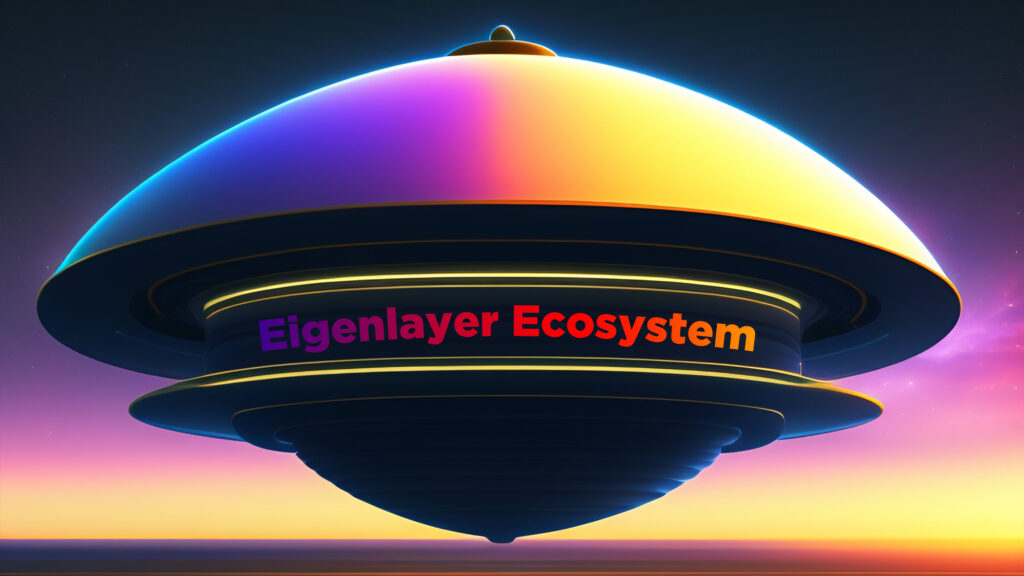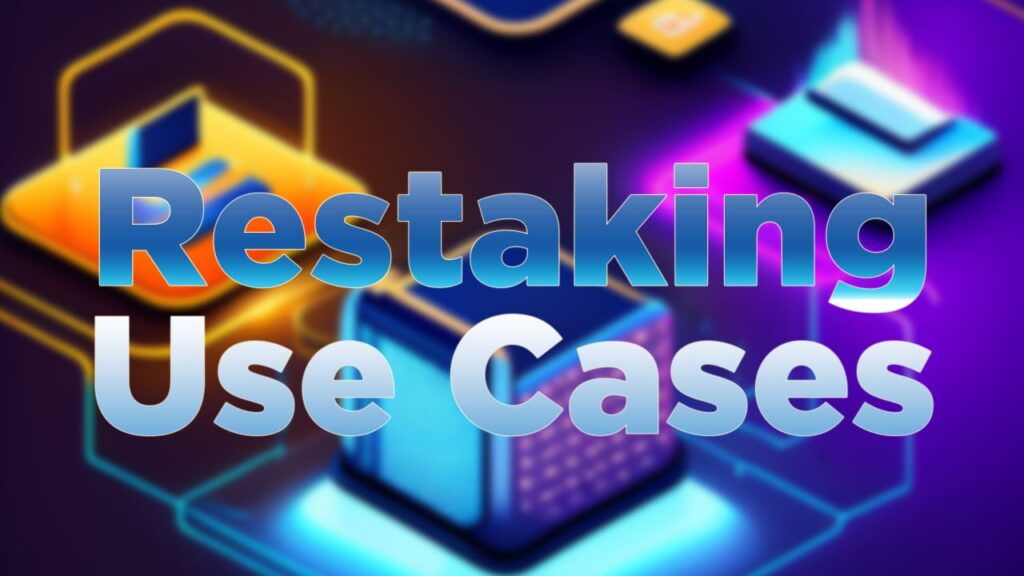In the dynamic world of cryptocurrency, restaking is emerging as a game-changing concept. This innovative mechanism, which allows staked Ethereum (ETH) to be used for securing other networks, is transforming the crypto landscape, particularly in the aftermath of Ethereum’s transition to Proof-of-Stake (PoS). This article will delve into the intricacies of restaking and its profound implications for Ethereum and beyond.
Table of Contents
Understanding Restaking
Restaking is a transformative concept in the realm of blockchain and cryptocurrency. It’s a mechanism that allows staked assets, specifically Ethereum (ETH), to be used as a form of cryptoeconomic security for other protocols. This is done in exchange for protocol fees and rewards, creating a symbiotic relationship between the staker and the protocol.
What is Restaking?
At its core, restaking is a process that allows the staked ETH to be used to secure other networks. This is a significant departure from the traditional staking model, where staked assets are used to secure only the network they are staked on. Restaking, therefore, expands the utility of staked assets, allowing them to serve multiple networks at once.
In the context of Ethereum, restaking is particularly relevant due to the network’s transition to a Proof-of-Stake (PoS) consensus mechanism. In PoS, validators are chosen to create a new block based on their economic stake in the network. Restaking takes this a step further by allowing these staked assets to be used for securing other protocols.
The Role of Restaking in the Ethereum Ecosystem
Restaking plays a pivotal role in the Ethereum ecosystem. It allows protocols to “rent” security from Ethereum, instead of having to build their own ecosystem from scratch and earn user trust. This not only simplifies the process for new protocols but also enhances the security of these networks.
For ETH stakers, restaking provides an additional source of income, besides the earnings from staking itself. This is because restaking allows staked ETH to be used as cryptoeconomic security for other protocols, in exchange for protocol fees and rewards.
Moreover, restaking benefits Ethereum itself. It expands the ETH ecosystem and brings back liquidity into the network that was previously highly fragmented. This can lead to a more robust and interconnected Ethereum ecosystem.
The Eigenlayer Ecosystem

The Eigenlayer ecosystem is a groundbreaking platform that first implemented the mechanism of restaking. It’s a vibrant and dynamic environment where restakers, operators, and developers each play a unique role and reap specific benefits.
Overview of the Eigenlayer Ecosystem
Eigenlayer is a unique ecosystem that provides a platform for restaking. It allows staked Ethereum (ETH) to be used as cryptoeconomic security for protocols other than Ethereum, in exchange for protocol fees and rewards. This innovative approach to staking has the potential to revolutionize the way we think about blockchain security and the utility of staked assets.
The Eigenlayer ecosystem is composed of three main participants: restakers, operators, and developers. Each of these participants plays a crucial role in the functioning of the ecosystem and stands to benefit from the restaking mechanism.
Restakers in the Eigenlayer Ecosystem
Restakers are the individuals or entities that stake ETH across multiple protocols at once. They are the backbone of the Eigenlayer ecosystem, providing the necessary security for other protocols. Restaking enables these staked ETH to be used as cryptoeconomic security for protocols other than Ethereum, in exchange for protocol fees and rewards. This provides restakers with an additional source of income, besides the earnings from staking itself.
Operators in the Eigenlayer Ecosystem
Operators in the Eigenlayer ecosystem provide new protocols with validation services. These services are designed to complement their existing Ethereum validation operations. By optimizing usage across their nodes, operators can maximize capital efficiency with minimal incremental cost.
Developers in the Eigenlayer Ecosystem
Developers are another crucial component of the Eigenlayer ecosystem. Eigenlayer provides developers with access to the Ethereum staked capital base and decentralized validator set. This access to a trust network can make previously impossible mechanism designs possible, opening up a world of new opportunities for developers.
Restaking Use Cases

Restaking has a wide range of use cases, each of which demonstrates its potential to revolutionize the crypto world. Here are some of the key use cases where restaking can make a significant impact:
Data Availability
One of the most prominent use cases for restaking is in enabling a hyperscale Data Availability (DA) layer. With a high DA rate and low cost, restaking can provide a robust and efficient data layer for various applications. EigenLabs, for instance, is building the first DA layer on EigenLayer, called EigenDA. This DA layer can serve as a foundation for various applications, including rollups, light node bridges, and more.
Decentralized Sequencers
Restaking can also play a crucial role in forming a single decentralized sequencer quorum that serves many rollups. This can enable more efficient MEV (Miner Extractable Value) management and provide stronger censorship resistance. By leveraging the power of restaking, a network of decentralized sequencers can be created, providing a more secure and efficient environment for transactions.
Light Node Bridges
Restakers can verify off-chain whether bridge inputs are correct, and if a strong quorum signs off, then the inputs are accepted. This can significantly enhance the efficiency and security of cross-chain transactions, making it easier and safer for users to move assets across different networks.
Fast-Mode Bridges
In the context of fast-mode bridges, restakers can play a crucial role in ZK (Zero-Knowledge) proof verification off-chain. This can significantly speed up the process of cross-chain transactions, providing users with a faster and more efficient experience.
Oracles
Restaking can also be used to build oracles that enshrine price feeds into Ethereum. This can provide a more secure and reliable source of price information, which is crucial for various DeFi (Decentralized Finance) applications.
Opt-In Event-Driven Activation
Ethereum validators who are block proposers and opted in to restaking can provide strong guarantees on inclusion of event-driven actions. This can enhance the security and reliability of event-driven applications, providing a more robust environment for users.
MEV Management
Restaking can enable different MEV management methods under EigenLayer. This can provide a more efficient and fair environment for transactions, reducing the risk of MEV extraction.
Low-Latency Settlement Chains
EigenLayer allows restaked sidechains where ETH restakers can participate in new consensus protocols. This can enable the creation of low-latency settlement chains, providing a faster and more efficient transaction environment for users.
Single-Slot Finality
Restaked nodes can attest they will not build on a chain that does not include a testified block. This can provide single-slot finality, enhancing the security and reliability of the network.
How to Restake via EigenLayer

Restaking via EigenLayer is a process that involves a few key steps. It’s designed to be user-friendly and accessible, even for those who are new to the world of cryptocurrency and blockchain. Here’s a step-by-step guide on how to restake via EigenLayer:
Step 1: Understanding the Basics
Before you begin the process of restaking, it’s important to understand what it entails. Restaking is a mechanism that allows staked Ethereum (ETH) to be used as cryptoeconomic security for other protocols. This is done in exchange for protocol fees and rewards. By restaking, you’re essentially “renting” your staked ETH to other protocols, which can provide you with additional income.
Step 2: Choosing Operators
The next step in the process is to choose operators. Operators in the EigenLayer ecosystem provide new protocols with validation services. These services are designed to complement their existing Ethereum validation operations. By optimizing usage across their nodes, operators can maximize capital efficiency with minimal incremental cost.
Step 3: Delegating to Selected Operators
Once you’ve chosen your operators, the next step is to delegate your staked ETH to them. This is done through the EigenLayer platform. By delegating your staked ETH to selected operators, you’re allowing them to use your staked ETH as cryptoeconomic security for other protocols.
Step 4: Opting In to Secure/Validate New Protocols
The final step in the process is to opt in to secure/validate new protocols. This is done through the EigenLayer platform. By opting in, you’re allowing your staked ETH to be used as cryptoeconomic security for these new protocols. In return, you receive protocol fees and rewards.
Conclusion
Restaking is a transformative technology that’s reshaping the crypto landscape. While it’s not without its risks, the benefits it offers to Ethereum and the wider crypto world are undeniable. As Ethereum’s founder Vitalik Buterin has said, “Double use of ETH staked by a validator, though it comes with some risks, is fundamentally okay.” So, get ready to hear more about this technology, especially in the context of the EigenLayer project.


